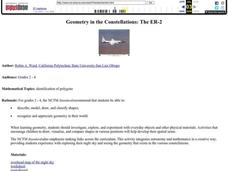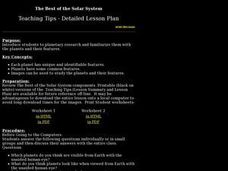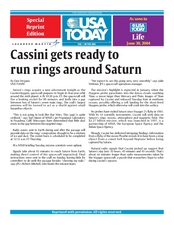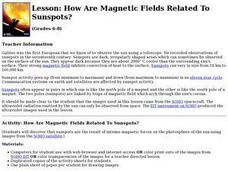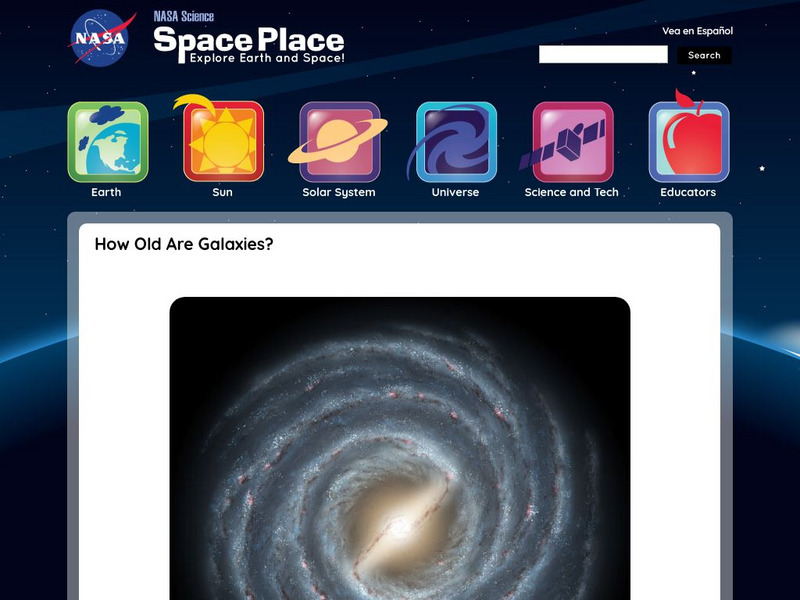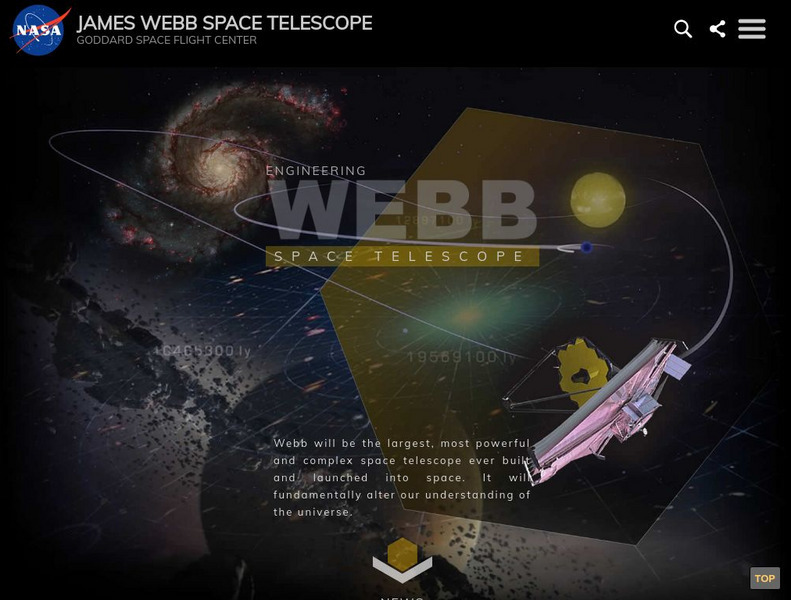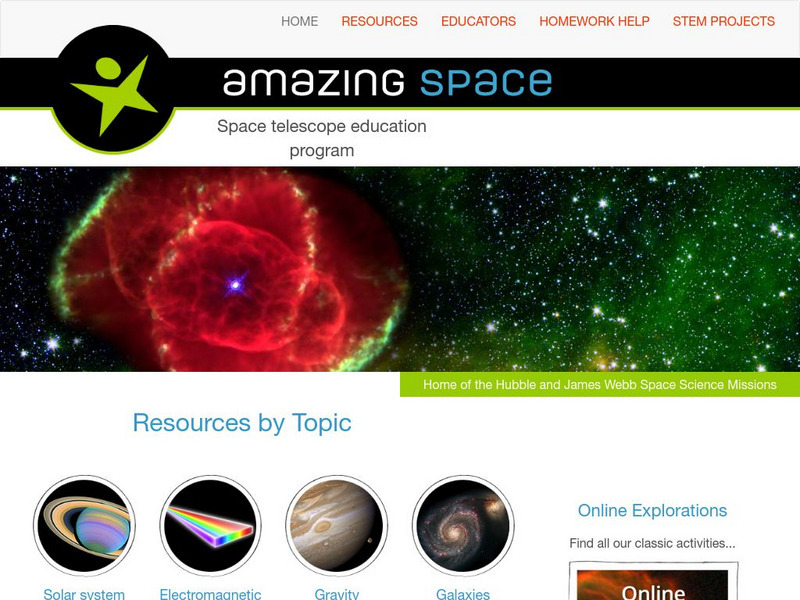Curated OER
Light Gathering Power
Learners compare and calculate the light gathering power of lenses. They determine the ability of various lenses and mirrors to gather light.
Curated OER
Geometry in the Constellations: The ER-2
Students discuss reasons to record the location of stars. They view a picture of the night sky, and discuss constellations. Students complete a worksheet of the various shapes they see in the constellations.
Curated OER
How Many?
In this book-making worksheet, students create a number and color book. Each page gives a picture of a group of items with a sentence. Students insert the correct number and trace the color word.
Curated OER
Planetary Research (Grades 9-12)
Students are introduced to planetary research and familiarize them with the planets and their features. They see that each planet has unique features. Planets have some common features and that images can be used to study the planets and...
Curated OER
Pulsar Stars And Black Holes
Students explore the discovery of pulsar stars, and the characteristics of pulsar stars. Theories and ideas behind black holes are discussed. The issues of women's historical role in science are also touched on.
Curated OER
Inside the KAO
Students construct a 1/80th scale model of the interior of the KAO aircraft, or lay out a full-scale mock-up in their classroom or auditorium. they calculate the sizes of various sections of the cabin.
Curated OER
Cassini gets Ready to run Rings Around Saturn
Fourth graders study an article about Saturn. In this investigative lesson students discuss the article and complete an activity that asks them what question they would pose about Saturn.
Curated OER
Day and Night
Students using experiments try to demonstrate how observations can be affected by the cycles of night and day.
Curated OER
Pinhole Viewer
Students make a pinhole viewer to demonstrate how it inverts light passing through it which produces inverted images.
Curated OER
Lenses and Mirrors
Students investigate lenses and mirrors showing how they bend and reflect light waves.
Curated OER
How Are Magnetic Fields Related To Sunspots?
Students discover that sunspots are the result of intense magnetic forces on the photosphere of the sun by observing images from the SOHO satellite.
Curated OER
Finding Jupiter's Moons
Students explore Jupiter's Moons. They calculate and predict the location of Jupiter's 4 large moons. In addition, they draw Jupiter with its moons correctly shown for the time of the observation.
Curated OER
Observing Mars in the Night Sky
Students compare and contrast the orbits of Earth and Mars, locate the planet Mars, and diagram its retrograde motion.
Curated OER
Heat Currents
Students using a slide made out of aluminum foil and pin holes observe visible light.
NASA
Nasa Quest: Live From the Hubble Space Telescope
An interactive NASA site with detailed information about the Hubble Space Telescope. Includes a gallery of images, historical information, teacher's guides, and links to special online events.
California Institute of Technology
What Is the Spitzer Space Telescope
Learn about one of the current space observatory launched into space: The Spitzer Space Telescope. Discover its purpose, activities, and how the telescope was built.
NASA
Nasa Star Child: The Hubble Space Telescope (Level 1)
This article for younger students introduces the Hubble Space Telescope and what it is doing in outer space.
Space Telescope Science Institute
Space Telescope Science Institute
The homepage for the Space Telescope Science Institute provides a variety of resources on the James Webb Space Telescope and Hubble Telescope. Also provided is information on the institute itself, a data archive, and a wide range of...
NASA
Nasa: The Space Place: How Old Do I Look?
Find out how the Galex space telescope is determining the age of galaxies using red-shifted light. View pictures taken by Galex. This resource also has a game which involves determining the ages of objects.
NASA
Nasa: James Webb Space Telescope
NASA's web site about the James Webb Space Telescope, which will replace the Hubble telescope and is expected to observe the farthest reaches of the universe.
California Institute of Technology
Build Your Own Spitzer Space Telescope Model
Make a model of the Spitzer Space Telescope using simple materials. Also included is a model of the Boeing Delta II Launch Vehicle which completed a historic 300th launch with the Spitzer Telescope on board.
Space Telescope Science Institute
Amazing Space: Telescopes From the Ground Up
Students can investigate the historical development of six different telescopes. The technical aspects of different telescopes are also presented.
Space Telescope Science Institute
Space Telescope Science Institute: Amazing Space
Amazing Space promotes the "science and majestic beauty of the universe for use in the classroom." Here you can find learning activities, lesson plans, teaching guides, and helpful tips for students eager to learn about space and space...



